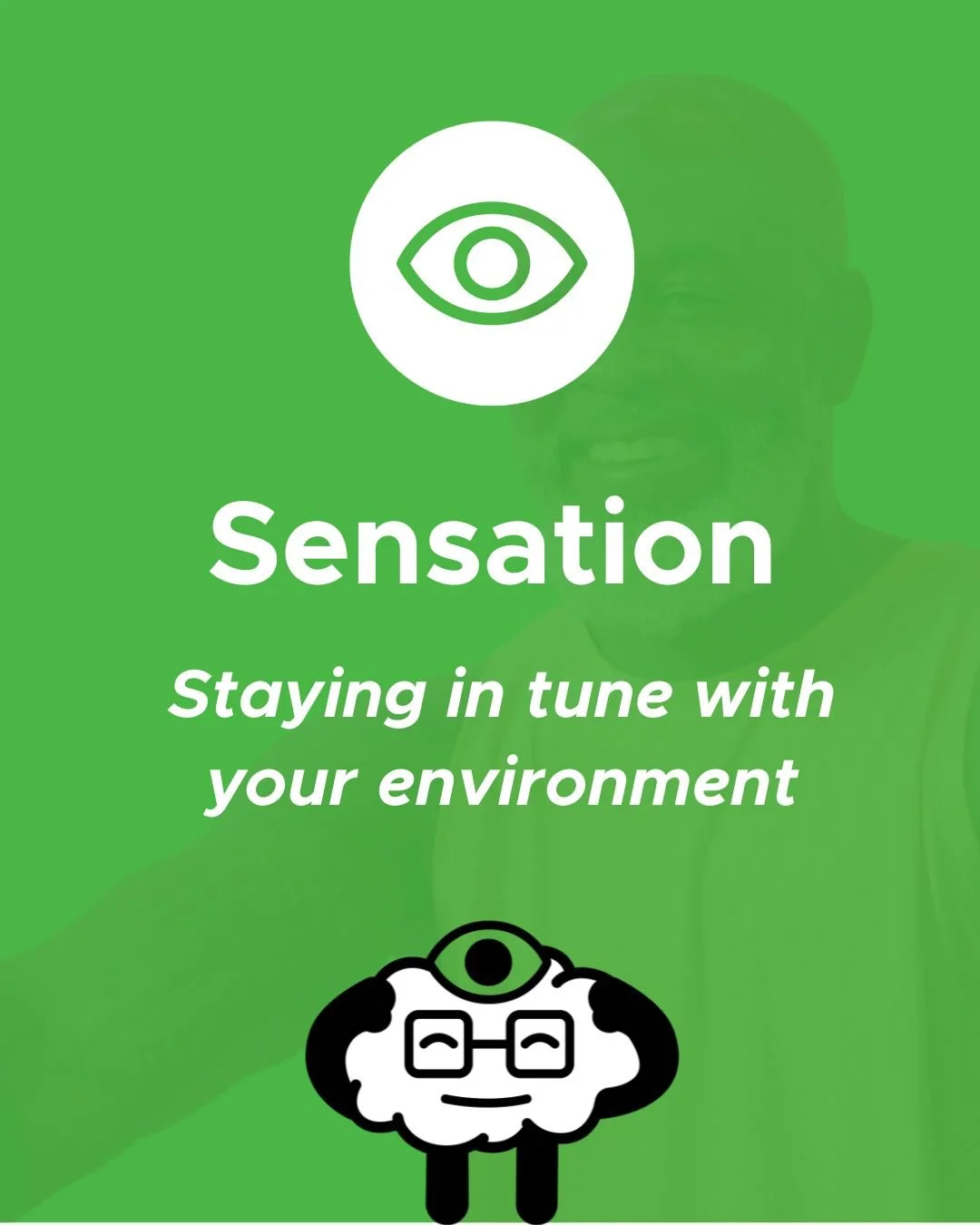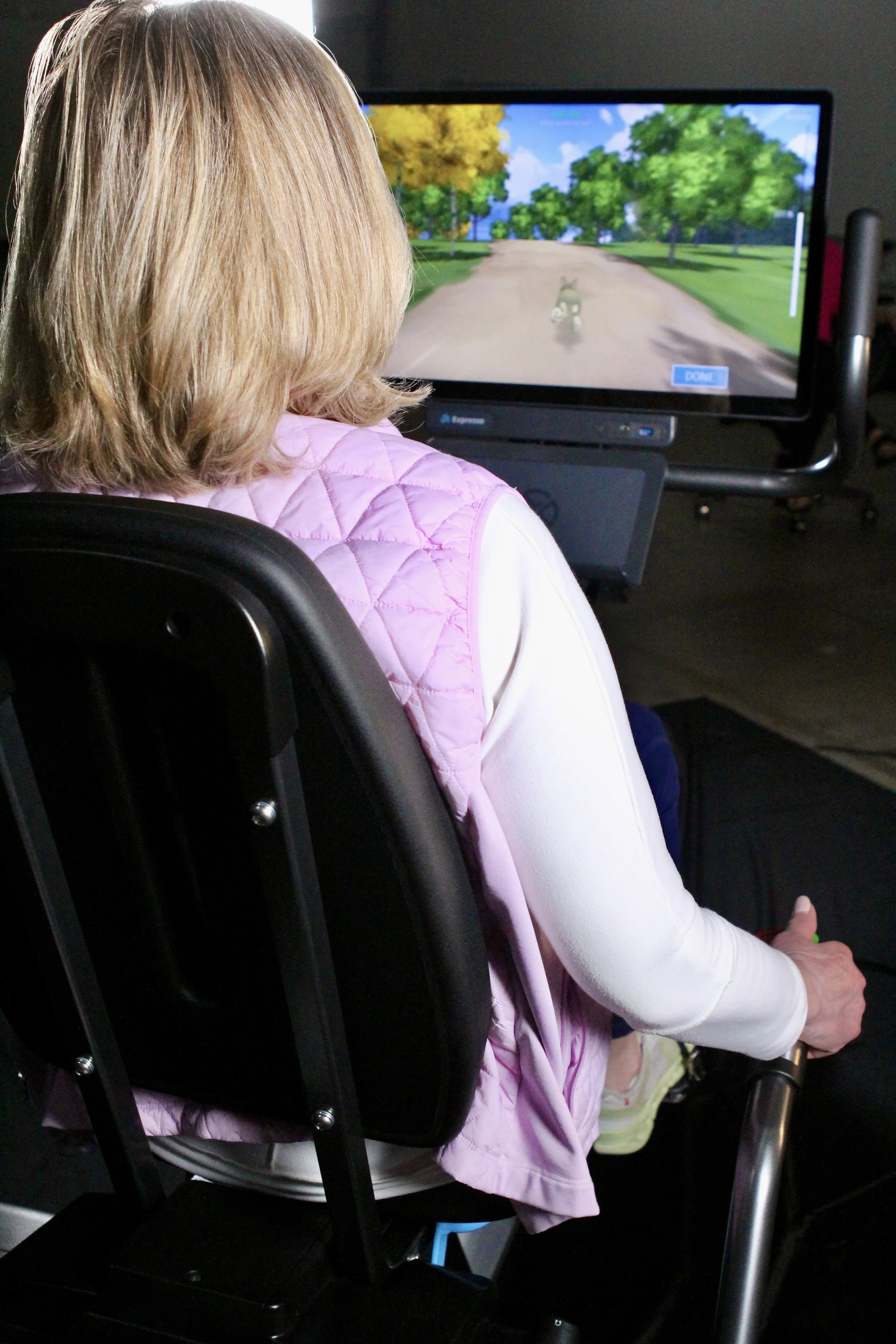Sensation: Staying in Tune with Your Environment
Why Sensation Matters
Sensation is the foundation of how we experience the world. It’s the ability to receive input from our senses—touch, sound, sight—and react to it appropriately. Strong sensory processing helps us maintain coordination, detect hazards, and adapt to changing environments.
When sensory processing slows, everyday activities become harder. Missing a cue while crossing the street, failing to react quickly while driving, or walking on uneven ground all highlight how essential sensation is for independence and safety.
How Exercise Supports Sensation
Physical activity enhances sensory integration by constantly feeding the brain with input from muscles, joints, and external stimuli. Dual-task training takes it further by requiring you to respond to multiple cues at once—pedaling while reacting to a sound effect, steering while watching for obstacles, or pressing a button when a visual cue appears.
This kind of multitasking strengthens the nervous system’s ability to process and integrate sensory information on the fly.
Training Sensation Through Play
With Brain Skills Time Tracking, riders can now measure how much time they’re spending tuning into sensory cues during gameplay.
Examples:
In Row Your Boat, players steer through fast-moving rapids, using rapid visuomotor reactions to avoid rocks and obstacles by moving the handlebar left or right.
In the Trail Run game, players refine their eye–hand coordination and timing accuracy to initiate jumps at the optimal moment and manage jumps efficiently.
Haptic feedback or resistance changes build responsiveness to physical sensations.
These mechanics ensure your brain isn’t just passively receiving input—it’s actively practicing how to interpret and respond.
Why It Matters for Different Ages
Young Athletes: Sensory responsiveness enhances coordination and reaction time in sports.
Adults in Daily Life: Staying attuned to sensory input helps with multitasking, driving, and even learning new skills.
Older Adults: Training sensation can improve balance, gait, and fall prevention, supporting long-term independence.
Putting It Into Practice
Ways to build sensation training into your rides:
Check Sensation Minutes: After your session, see how much of your ride engaged this skill.
Combine With Motor Skills: Sensation pairs naturally with motor training—building a stronger brain-body connection.
The Takeaway
Sensation keeps us in tune with the world and ready to respond. By making it measurable, Brain Skills Time Tracking transforms every ride into a sensory training session. Whether your goal is sharper athletic performance or safer daily living, sensation skills are the hidden foundation of a stronger, more responsive mind and body.


